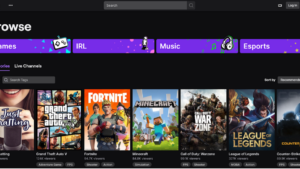CAWEB Master’s Adds New Intercultural Communication Course

Starting in 2021, the CAWEB master’s will have a new course called Intercultural Communication. We are honored to have the opportunity to talk about this course in more detail with it’s instructor, Tatiana Ryabinina.
Meeting Tatiana Ryabinina
Hi, Tatiana! To start, could you please introduce yourself?
Hi and thank you for inviting me! I am a cross-cultural marketing strategist and management consultant based in London. I solve international business problems that lie somewhere at the intersection of strategy, operations, marketing, branding, customer experience, linguistics, semiotics and cultural anthropology. Together with my Australia-based business partner, I set teams up for success in new markets by providing strategy and management support for international expansion and growth.
Growing up in post-Soviet Russia, I was dreaming about becoming a diplomat so I could help nations avoid conflicts and foster mutually beneficial relations. To some extent, that dream came true because what I do today for businesses is quite similar. For the past decade I have been helping brands adapt their strategies, products and communications to reach customers in foreign countries in ways that are locally relevant and culturally appropriate.
Understanding Intercultural Communication
Could you tell us briefly what intercultural communication is? Also, why do you think it’s important that the CAWEB master’s has this course?
Intercultural communication refers to what emerges when we communicate with others whose experiences, beliefs and behaviors are different from ours. We might not agree on the definition of ‘culture’ which means different things to different people, but I believe we can agree that culture is inseparable from language and that we filter everything we experience through these two lenses. Depending on the language we speak and the cultural environment we are in, we think, feel and behave differently. Our cultural backgrounds influence our thinking, expectations and even our understanding of common sense, and all this manifests in the way we communicate.
The origin of a discipline that studies communication across different cultural groups and how culture affects communication is often identified with the work of American anthropologist Edward Hall. During the 1950’s he was exploring ways to prepare those working in the diplomatic service to be more culturally effective. Interestingly, the academic home for intercultural communication was not in anthropology but in departments of communication, and programmes in business and management often offer courses in intercultural communication, which is a very pragmatic, applied and interdisciplinary field.
Knowing how cultural differences impact communication is particularly important for anyone who works in a multilingual and multicultural environment, especially if their work involves creation and management of multilingual content. The knowledge of intercultural communication is helpful when, for example, there is a need to understand why communications of a U.S. company translated into French are perceived by its French customers as too American and therefore unappealing, and what can be done to change that. CAWEB Master’s is tailored for professionals who are likely to encounter these challenges every day, and it is natural that the programme offers a course in intercultural communication, which I am very excited about.
Why Intercultural Communication Is Important
Could you please explain the importance of intercultural communication?
I think we need some context to put it in perspective. The discourses of cultural differences and intercultural communication emerged in the context of colonialism, when the subjugation and exploitation of different peoples needed to be morally justified. The dominant belief was that different peoples had different cultures which were hierarchically ordered, with European culture being the most superior. But we have abandoned that belief, which is the reason why, for example, the business school I graduated from last year has just changed its name because it had links to slave trade. What drives these changes and sets the context for intercultural communication, which is gaining a prominent place in all aspects of our life, is largely the need to defeat that old idea of global cultural hierarchy to which we owe the notions of racism, ethnocentrism and xenophobia.
Today businesses and institutions around the globe lead the way for intercultural communication and rely on it when introducing inclusive practices and shaping organisational cultures. We are becoming a society where the default communication is intercultural, and it is no longer driven by cultural hierarchy but by cultural sensitivity. A society where we don’t try to impose our view of the world on others but want to understand other cultural perspectives so we can adapt our behaviour and communicative practices in order to avoid cultural conflicts and have mutually beneficial interactions. We are even changing our own languages so that our cultures can be more inclusive. Studying intercultural communication helps us become that kind of society.
Examples of Intercultural Communication in the Real World
What are the major dangers if we ignore intercultural communication? Could you give us some examples?
In our globalising and digitising world, more and more often we interact with people whose cultural backgrounds are different from ours, so it is difficult not to be aware of intercultural communication. But what often gets underestimated and leads to unwanted consequences is that today all communication is potentially intercultural because all content has a global reach. The challenge is that we can’t always know who is going to be at the receiving end and what they might find inappropriate or offensive when they interpret our message through the lens of their culture.
One rather controversial example that comes to mind is the TV commercial featuring Richard Gere driving from Hollywood to Tibet that forced Fiat to apologise to China. The commercial was intended for the European audience, but it was also seen by Chinese people on YouTube and perceived as political propaganda. In the intercultural context, forgetting that messages and audiences can be unintended can easily escalate into international issues.
Another pitfall comes from ignoring that symbols are powerful communicators and that cultural values differ greatly across countries. Puma was not aware of it when designing shoes that featured the colours of the UAE flag to celebrate the country’s 40th anniversary. The company had to recall the shoes from all stores as it learned a lesson in intercultural communication – if a country sees an object as inseparable from the notion of impurity, placing on that object the country’s symbol will be seen by its people as an insult to the nation.
But even when we are aware of cultural differences and try to respect the cultural values of others, we should not forget our own. A great illustration of this dilemma is IKEA who about a decade ago adapted its catalogue for Saudi Arabia by removing women from all images in order to conform with local censorship practices. It backfired because the brand ended up being criticised outside Saudi Arabia and primarily at home where IKEA is seen as an ambassador of Sweden’s values – excluding women is against them.
Working Within the Field of Intercultural Communication
Lastly, could you give some advice to students who wish to work within this field?
If you want to work in a role that involves intercultural communication, you will need many diverse skills that you will be applying every day. It will help if you start acquiring them sooner rather than later. It goes without saying that you must be inquisitive and continuously learn about other cultures. Being able to take another cultural perspective and see a message through the eyes of someone whose cultural background is different is also critical. Other than cultural awareness and empathy, you will need strong analytical skills because you will be continuously investigating aspects of cultures you are not familiar with as well as analysing communication and the context in which it takes place. Attention to detail and the ability to see the big picture are both a must-have.
You should also be ready to deal with uncertainty and make decisions, often based on limited information coming from diverse sources, that can involve high levels of risk or might even be paradoxical. Like a former colleague of mine, you might find yourself working in a company that prides itself for being inclusive and, to highlight that, wants to publicise that it partners with “Black-owned businesses”, and you would need to decide whether or how this should be mentioned in the company’s global communications knowing that the equivalent of “Black” in other languages sounds extremely racist.
You will often need to assess risks and choose between options where none is risk-free. You will need to learn how to balance the risk of not communicating the intended message with the risk of compromising the company’s image or identity. In my course I will be sharing some tools that I have been using over the years to help managers make these difficult choices, so do join if you can! Intercultural communication is a truly exciting field, and if you are an explorer and a fan of lifelong learning you will enjoy it a lot.
This all sounds great, we look forward to taking your course! And thank you very much for taking the time to take part in this interview.
Other articles
-

Discover our online Master in digital communication
-

Celebrating 20 Years of Excellence: The 20th Anniversary of the Master CAWEB
-

Balancing Personalization and Privacy in Customer Communication
-

Twitch: The New Goldmine of Digital Marketing
-

5 Ways to Create the Perfect Color Palette for Your Website


